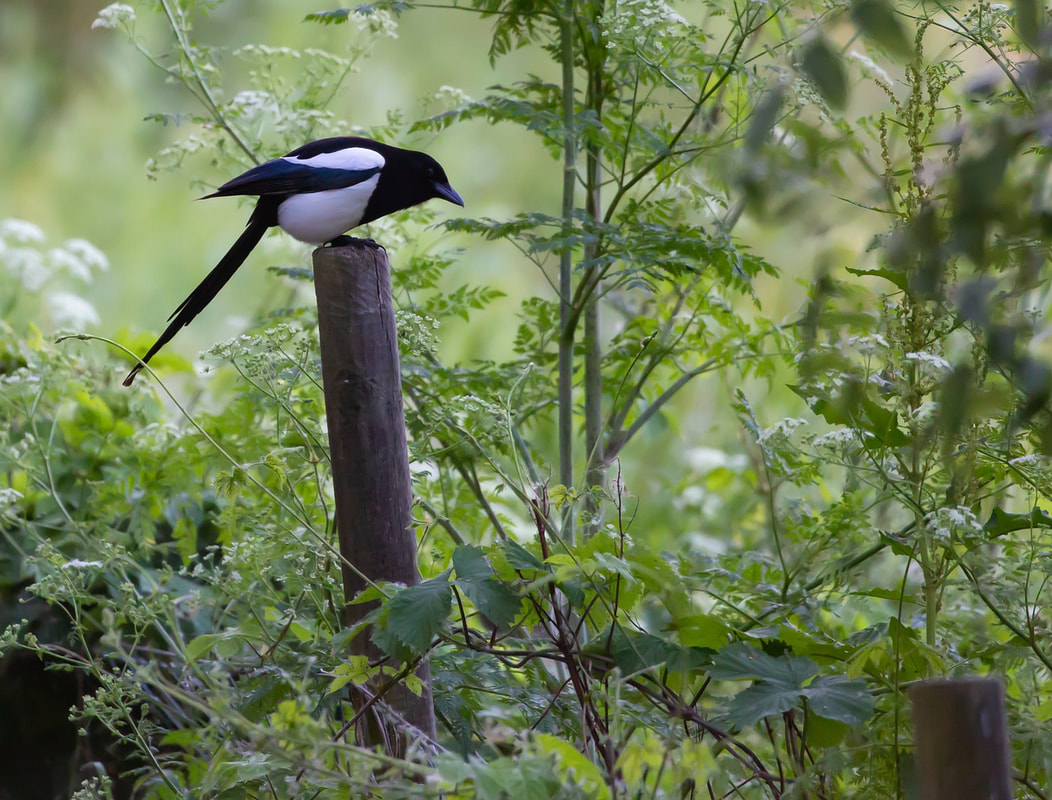
By Melusine Draco
‘Talking to crows’ is said of those who have some presentiment or foresight in Sicilian folk-lore. It is believed that to those who can understand them, these black birds, garrulous creatures they are, communicate the latest news on the doings of human beings, since they have a clear view - a bird’s eye view - of the whole. They have also been around for a lot longer than human beings and, perhaps not surprisingly, long ago developed the reputation of being messengers of the gods in many different cultures across the world.
The best way to introduce ourselves to Corvidae is by feeding them. Some may argue that corvids are wild creatures and by feeding them, we encourage an unnatural dependence. With most wildlife, this is an excellent philosophy. But most corvids and humans have been living side-by-side for centuries now, and researchers like Marzluff and Angell (co-authors of In the Company of Crows and Ravens) point to many instances of cultural co-evolution between us. This relationship has been arguably symbiotic for quite a while now. Certainly, after all this time together, our lives and histories have become closely intertwined. They’ve watched people come and go for years; people who may have watched them right back.
Don’t try to get too close. These are wild creatures, after all. Our goal shouldn’t be to tame them or make them into pets. Even after years of friendship, a corvid will be skittish and standoffish, and it’s better this way. They are never going to come running for a fuss, and their standoffish attitude is probably a major reason why they have thrived as a species for so long ... but if we’re interested in them, we have to learn to appreciate their charms from afar.
Besides, get real, most humans view crows as ominous, murderous evils (or at best, rats with wings). For centuries, crows have played the bad guys in the stories humans tell themselves, and I’m sure those crows have noticed the eye daggers most people shoot at them, how cars veer to the shoulder to intentionally run them over. Why wouldn’t that distrust be mutual from a creature with this level of intelligence? So crows will take their own sweet time deciding if they trust us or not ... but once they know who we are, they’ll never forget. At first, they may give us the cold shoulder and ignore our offerings, but don’t take it personally. Remember that paranoia is all about survival, but patience and vigilance will eventually pay off. If we pass the test, they will decide to trust us. [Joanne Fonté, How To Make Friends With Crows]
We can also see how there are various attributes that are associated with all members of the Corvidae family but that there are also subtle differences between each of the species. All are monogamous and loyal, although some are more aggressive than others; all have a highly developed intelligence while others often display anti-social habits. When we begin ‘talking to crows’ we are entering into a mystical dialogue with Otherworld by being sent spiritual messages showing us a symbolic image of a corvid, either a physical bird or the spiritual image of one in the guise of a totem.
These messages are words of wisdom and advice, and they can help us to identify talents we are not using, or the negative beliefs and thought patterns that are holding us back. Once these messages are understood and applied to our lives, they can be a valuable source of direction as we progress on our spiritual journeys. Birds reflect a strong symbolism. They encourage us to aim high and realize our goals despite the challenges we might face as we chase those dreams. They can also be a motivation to deepen our spirituality even more because they help us explore our devoutness and push the boundaries. Although some may represent good omens, some, unfortunately, do not. Which is why it is important to know which of the species we encountered before we get in a state with worry – we need to be able to interpret our sightings accurately. [Birds: Divine Messengers, Angela Wansbury]
Fossil records suggest that modern birds originated 60 million years ago, after the end of the Cretaceous period about 65 million years ago when dinosaurs died out. And, since prehistoric times, people have probably looked to the heavens for signs; and since birds fly, it makes sense that people would have perceived birds as messengers of divinity. After all, a bird’s-eye-view is significantly more omniscient than any earthbound perspective. Birds know what the world looks like from 30,000 feet high; they have seen the insides of clouds, so looking to birds for perspective makes an odd kind of primitive sense.
And, wouldn’t it be convenient if all we had to do to find answers and guidance in life was to walk outside, look up at the sky, and ‘read’ the birds flying overhead, especially if black meant always bad and light or brightly coloured birds always meant good – but of course, nothing is that simplistic. For example: What does it mean if a crow follows us? It doesn’t necessary mean some highly significant or mystical message. It’s more likely that the crow recognizes us for some friendly reason. If a crow follows us, it feels a connection to and/or curiosity in use for some reason. Maybe we fed that crow once before (or we look like someone who did) … because we’ve learned that corvids have the power of recognition for humans.
Or if a corvid shows no fear of us, it may be something to pay attention to for a variety of reasons. Perhaps the bird is trying to tell us something. Either it is just the bird’s interest in us (maybe we looked familiar – maybe it is hoping for food), or perhaps it represents someone else’s interest in us – a deceased loved one, an ancestor, or just the universe, trying to connect with is for some reason. See the incident outside the bookshop at the end of Chapter 4.
- There are two kinds of bird signs: impetrative (sought after, asked for, or requested) and oblative (unasked for; coming out of the blue like a bolt of lightning!). So ask yourself: Is the bird bringing us an unasked-for message from the universe? Or is it answering a question we’ve asked – explicitly or implicitly?
- Seeing a bird is not going to give us a clear answer. It’s no magic 8-ball (a fortune telling gadget shaped like a classic pool eight-ball; filled with water and containing a multi-face dice, with each side featuring the answer to a question – and who thinks those are really magic!?). A bird’s colour doesn’t necessarily make any meaningful difference whatsoever.
- And the millions of corvids that exist aren’t on the planet simply for the purpose of providing humans with messages from Otherworld because they have a difficult time as it is merely staying alive! We need to establish an affinity with the birds in our immediate vicinity, because there is little point in claiming a raven or chough as our personal totem when we’ve never encountered one in the flesh. Similarly, I rarely see a carrion crow or jay, but the ‘hoodies’ are regular visitors – as are the magpies and rooks – and I talk to them on a regular basis.
- And what better way to affirm this affinity than with a tattoo. A bird tattoo meaning is deep, and primarily stands for freedom, independence, and fearlessness. Some people who choose to get a bird symbol inked on their body tells us something that is individually unique to that person, and his or her experiences. They often relate to one of the following:
- Spirituality, higher understanding or a connection to the being supreme
- Self-sufficiency, self-actualization or the power of self-direction
- To enhance perspectives or capabilities, like agility, lightness, buoyancy, and the ability to rise above adversity.
Birds that represent freedom can mean mental autonomy, spiritual self-direction, and independence from the hindrances of physical capabilities or freedom of any other choice.
Let’s be honest … anything can be symbolic if we want it to be and everything in Old Craft is linked in some way to sigils and symbols, allegory and analogy, metonym and metaphor. This is the language of witches.
Members of this large, adaptable family live in habitats ranging from treeless tundras where land is flat to mountain forests. They live in deciduous forests, where trees shed their leaves, and coniferous forests, with cone-bearing evergreen trees. Corvids range in deserts, grassland steppes where there are few trees, and on the edge of rainforests, where heavy rain produces much growth. In addition, they live in cities and small villages. They are always our close companions and who more able to communicate news from Otherworld, should we choose to listen?
Talking to Crows: Messengers of the Gods by Melusine Draco is published by Ignotus Press UK as the second in their Arcanum series : ISBN 978 1 83945 968 9 : 104 pages : Price £6.85 Order direct from https://www.feedaread.com/books/TALKING-TO-CROWS-9781839459689.aspx
.





 RSS Feed
RSS Feed